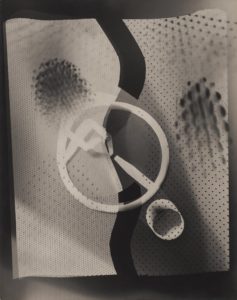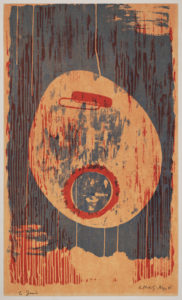László Moholy-Nagy
Hungarian, 1895—1946
About
László Moholy-Nagy
Hungarian, 1895—1946
Lázló Moholy-Nagy was a Hungarian painter, photographer, philosopher, and influential art educator. He experimented with many different techniques and materials, and is known in particular for his innovative photograms and photomontages.
After serving in the Austro-Hungarian army in World War I, Moholy-Nagy began taking art classes, studying painters such as Rembrandt, Cézanne and van Gough. He was also drawn to the more abstract styles of Cubist painters, which influenced his own avant-garde pieces. In 1920 Moholy-Nagy moved to Berlin and began creating abstract paintings and work made out of industrial materials. It was during this time that he started to experiment with placing objects on photosensitive paper to create photograms.
As he embarked on his career as an artist, Moholy-Nagy was heavily impacted by the Constructivism art movement’s philosophy: art is a practice aimed at creating social change and improvement. He was able to implement these ideals as a teacher at Germany’s innovative Bauhaus school of architecture, art and design, where he taught from 1923-1928. It was there that photography became an increasingly important focus, and Moholy-Nagy coined the term “New Vision” to describe his theory that photography could capture reality in a way that the naked eye could not. After leaving his position at the Bauhaus, Moholy-Nagy was very active, making money as a free-lance designer and creating some of his best- known photographs. He tested methods of capturing light, shot several short films, and developed deeper conceptual ideas behind his work.
In 1937 Moholy-Nagy was invited to be the director of the New Bauhaus: American School of Design in Chicago. There he was able to continue his own artistic practices in a variety of mediums, while educating students in art and design and providing them with the skills needed to make a positive contribution to society. He continued to explore new materials and technologies until he died of leukemia in 1946 at the age of 51. Throughout his life he published a number of books outlining his philosophy of “new vision” photography and his methods of art education. These texts along with his many artworks maintain his important legacy in the art and design industry.

